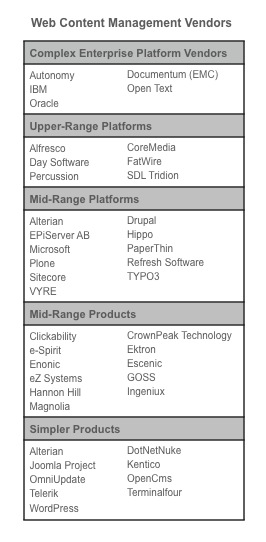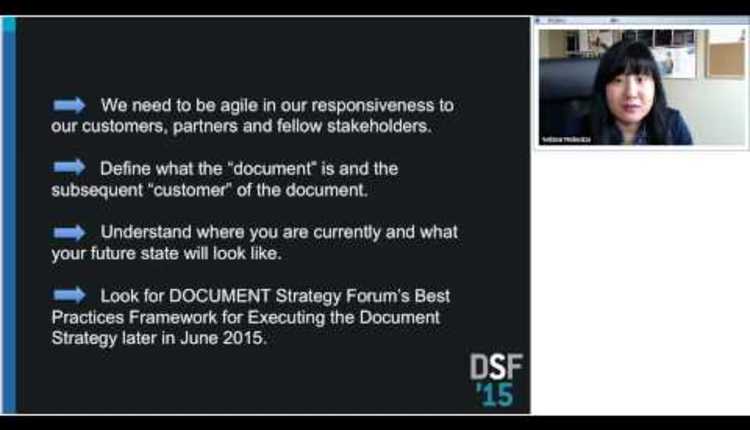
If you are in the market for a software tool to help you manage and publish enterprise web content, you are in luck, as the global web content management world is vibrant, growing and awash with options. However, the web content management (CMS) vendors that were more recognizable in past years are no longer leading the way. Instead, smaller, mid-tier players are fueling the web CMS market with a myriad of options — and new challenges — for buyers.
Upper-tier struggling
Buyers' fast-moving demands for enhancements and new out-of-the-box features have caused the larger, more platform-like vendors to struggle to keep up with smaller, more focused web CMS players.
The likes of IBM, Oracle, Microsoft and EMC may have great name recognition, but they have paid only scant attention to web content management and innovated very little in recent years. They remain suited only to those scenarios where an enterprise needs a low-level "toolkit" to address extremely difficult integration challenges.
Mid-market thriving
The ranks of viable, mid-market web CMS vendors continue to grow. Mid-tier web CMS vendors, along with open source platforms, tend to use lighter weight architectures that support greater adaptability. Thus, they have been able to innovate their offerings more rapidly.
A key advantage of this class of products as a whole is that they tend to offer more pre-packaged features. Many of them actively promote "website-in-a-box" solutions that include bundled social applications, analytics and collaboration functionality. This is particularly attractive if you are starting a new site from scratch and don't have pesky legacy content or preexisting applications to address. They also tend to require fewer development resources.
Another reason for the vibrancy in this tier is the relatively slow uptake of SharePoint as a web publishing platform. Other vendors are increasingly exploiting this opportunity to capitalize on SharePoint's weakness here. Several CMS vendors have developed packaged solutions promoted as less developer-oriented than SharePoint. A caveat, though: while these packaged solutions may be easier to deploy, they are more difficult to extend and integrate with other systems.
Specialist/simpler products
The web CMS marketplace for simpler, more tools is similarly crowded, with a diversity of technical and go-to-market approaches.
These are typically smaller, albeit established vendors that come to the marketplace with packaged tools at attractive prices. However, sometimes the tools are not as feature-rich or as well-tested as many of their "mainstream" competitors. These smaller tools also tend to specialize on an industry-specific niches or geographies.
Options, options, options
As we reach the end of 2010, the wide variety of products available has resulted in healthy competition in the web CMS marketplace. Buyers should welcome this breadth of choice. However, picking the right web CMS for an enterprise's unique challenges can be tricky when sifting through the myriad of options available. Successful buyers realize that selecting the right software is a multi-dimensional exercise. Savvy buyers do their homework and evaluate each potential solution in terms of cost, architecture, functionality, vendor intangibles and many other criteria.
So, more than ever, the pressure is on buyers to align product strengths with their enterprises' goals.
JARROD GINGRAS is an analyst with the Real Story Group, covering technology across the enterprise information landscape, including web content management and enterprise content management. For the full Web CMS Report and detailed evaluations of 45 Web CMS products and platforms, visit www.realstorygroup.com/Research/Channel/CMS.
















